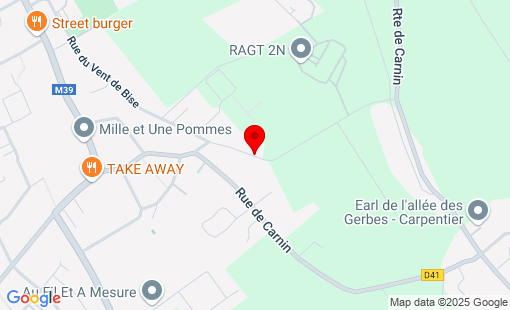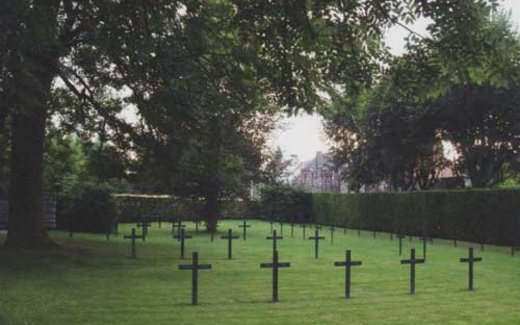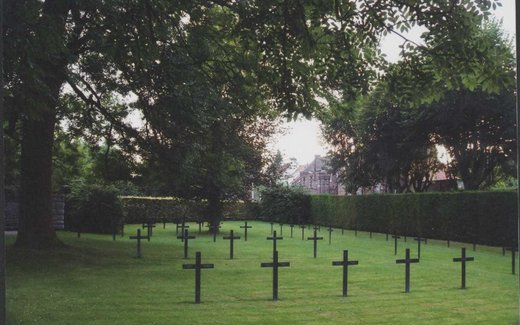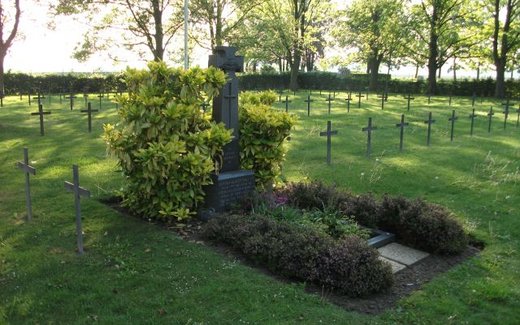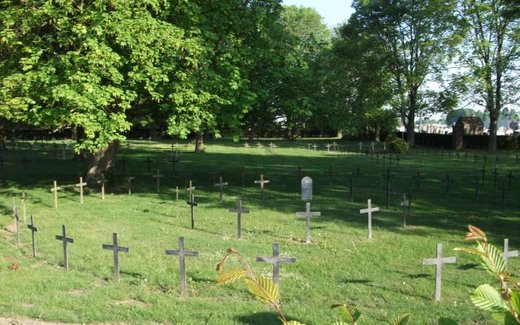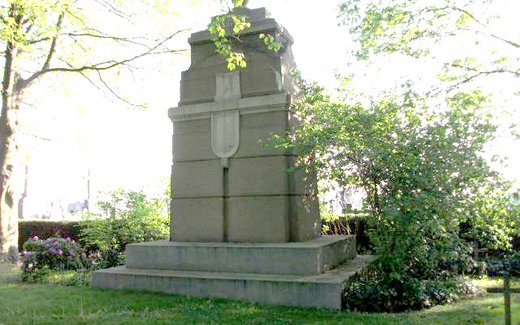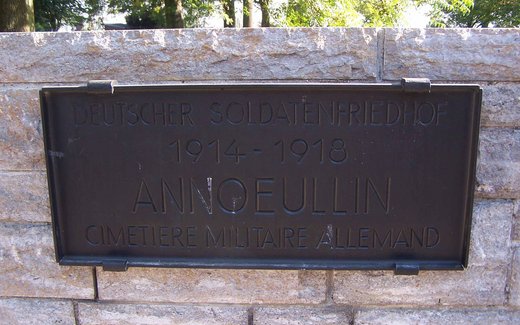France
Annoeullin
Total Occupation: 1.627 fatalities
Total Occupation: 1.627 fatalities
Contact
Rue du Cimetière
Annoeullin
France
Open all year round
Département Nord A total of 1627 war dead, including 1619 Germans, 7 Russians and 1 Briton. First World War The German military cemetery Annoeullin was established by the German troops in October 1915 during the heavy fighting west of the village in the front section between Armentières and Lens. Until October 1918, the troops buried their dead here, mainly from the time of the major British attacks in the spring and fall of 1917 as well as the German attacks in the spring of 1918 and the subsequent defensive battles. The dead belonged to units that had their home garrisons in Bavaria, Württemberg, Baden, Westphalia, Oldenburg, Hanover, Brandenburg, Thuringia, Saxony, Silesia and the Rhineland. Sculptors and stonemasons belonging to the troops created a memorial for the fallen of the 2nd Guards Res. Division. One of the most successful fighter pilots of the First World War, the British air captain Albert Ball, also found his final resting place in the cemetery. From his first mission in February 1916 until his crash on May 7, 1917, Ball had already achieved 44 aerial victories and was the recipient of the highest Allied awards as well as an honorary citizen of his native city of Nottingham. His conqueror in aerial combat was probably Lothar von Richthofen, the younger brother of the most famous German aviator, Manfred von Richthofen. Ball was buried on May 9, 1917, with all the military honors that the German troops bestowed upon him. At the express wish of his parents, the grave remained in the German military cemetery after the war - marked by a special memorial stone. In 1921, the French military authorities enlarged the cemetery by adding more German fallen soldiers from the surrounding communities. Repair work between the wars The Volksbund Deutsche Kriegsgräberfürsorge e.V. carried out the first work to improve the condition of the cemetery in 1929 on the basis of an agreement reached with the responsible French military authorities in 1926. However, the problem of permanently marking the graves initially remained unresolved due to a lack of foreign currency and the outbreak of the Second World War in 1939. Final design Following the conclusion of the Franco-German War Graves Agreement on July 19, 1966, the Volksbund Deutsche Kriegsgräberfürsorge e.V. - with financial support from the German government - was able to undertake the final design of the German military cemeteries of the First World War in France. In addition to a fundamental landscaping overhaul of the entire site and the construction of a new entrance with wing walls, the previous temporary wooden grave markers were replaced in 1980 with metal crosses with the names and dates of the dead cast into them. The Bundeswehr supported the Volksbund by, among other things, transporting the 35-kilogram concrete foundations required to erect the metal crosses. Of the 1,627 fallen soldiers, 1,593 rest in individual graves. Of these, eleven remain unknown. There are 34 fallen in the three common graves; one remains unnamed. For religious reasons, the two graves of the fallen of the Jewish faith were given a gravestone made of natural stone instead of a cross. The Hebrew characters read: 1 (above) "Here rests buried .... ." 2. (below) "May his soul be interwoven into the circle of the living."
